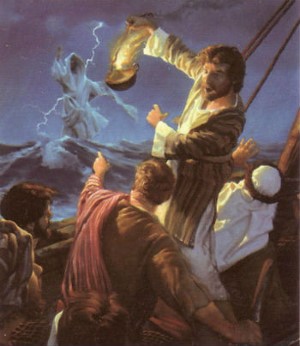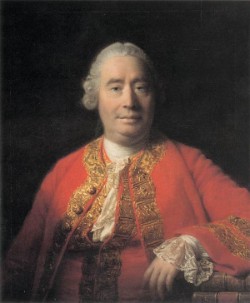Christians…and the Next Dimension
By Neil Earle
 Miracles are not suspensions of Natural Law as was once argued, but the application of higher principles from outside our 3-D world.
Miracles are not suspensions of Natural Law as was once argued, but the application of higher principles from outside our 3-D world.Back in 1962 in mathematics 1010 my prof would speculate about the Fourth Dimension which she said was Time. She also mentioned that Einstein worked on it but (at that time) only 4 or 5 people understood it.
I later learned that Christians are automatically projected into that discussion because of the unusual Biblical witness to what has been called Jesus Christ’s Resurrection body. We believers are brought into the supernatural aspect of existence because of our public claim that our Founder Jesus of Nazareth escaped a sealed tomb in Jerusalem after a publicly witnessed death at the hands of the skilled Roman executioners. Then came profoundly disturbing (and exciting) appearances to his disciples, the men and women who proceeded to “turn the world upside down” (Acts 17:6).
As Anglican churchman Michael Green wrote, “Without faith in the resurrection there would be no Christianity at all.” It is, said Wilbur Smith, “the very citadel of the Christian faith.”
Jesus Changes Time and Space
So here we are. The resurrection of Jesus is essential belief for the Christian. We have written and spoken much about the evidence for Jesus and his resurrection in the past. The fact is that Jesus in his appearances to Mary Magdalene and the disciples revealed himself to be living in a realm beyond our normal conceptions of time and space. He appeared without notice to the disciples in the upper room. Before that he also disappeared from the two disciples who ate with him at Emmaus who then hurried back to declare to the apostolic band, only to be told, “It is true! The Lord has risen and has appeared to Simon” (Luke 24:33-34).
 The influential David Hume (1711-1776) rejected miracles as violations of Natural Law unbefitting any gods that existed.
The influential David Hume (1711-1776) rejected miracles as violations of Natural Law unbefitting any gods that existed.St Paul wrote about “a spiritual body” sometimes called a “glorious body” and that is what Jesus had after his rising (1 Corinthians 15:43-44). The risen Lord was not a ghost or a spirit but able to eat and drink as a human being yet appearing and disappearing at will. He had obviously stepped beyond our normal dimensions of time and space. As Bible teachers such as Thomas Torrance and John McKenna have explained, it was harder to describe this reality before the discoveries made by Albert Einstein and his generation of physicists. Before the 1900s, the theories of Sir Isaac Newton and his followers held sway: Nature was unchanging, fixed in its paths just like the orbits of the planets around the sun, mathematics could calculate such things as the distance from earth to moon, the universe was as predictable as clockwork. The Scottish philosopher David Hume built on Newtonian physics to argue that miracles could not take place primarily because they were suspensions and even violations of Natural Law, something God Himself might never allow.
But by the late 1800s scientist were noticing anomalies and odd things that didn’t fit the Clockwork Universe. For one thing Venus rotated backward which upset the neat models of the solar system constructed since the late 1600s. For another the planetary orbits were not perfect circles. Newton knew that gravitational perturbations must affect each planet in their separate orbits but assumed God stepped in to straighten it out, claims Robert Irion in National Geographic (March, 2013).
By the 1920s the field of sub-atomic physics opened up ever more fascinating but bizarre realties in the infinitely small world of inner space. Niels Bohr won the 1922 Nobel Prize for discovering that electrons which give off bytes of energy called “quanta” can change their orbits without passing the space in between – the Quantum Leap. Even Einstein initially threw up his hands, declaring he couldn’t believe God played dice with the universe. Soon came smaller realities such as quarks that acted in even more bizarre ways.
 Niels Bohr: 1922 Nobel prize winner for Quantum Theory – described the mysterious leaps inside the atom that baffled Einstein.
Niels Bohr: 1922 Nobel prize winner for Quantum Theory – described the mysterious leaps inside the atom that baffled Einstein.Surprise and Changeability
The theological implications of this New Physics were something Scottish theologian Tom Torrance zeroed in on: the 20th century was showing that the universe was not only more complicated than everybody thought, it was also open to surprise and unpredictability. Such things as a resurrection and escaping space and time in a “spiritual body” were feasible. A British writer exclaimed: “After quarks the Virgin Birth is a boodle (a piece of cake!)” Likewise, Biblical reports of resurrections and ascensions.
This helps us get a more understandable fix on accounts of Jesus’ resurrection body. Jesus tells Mary in the garden not to “hold on to him” because things are vastly different now than in the days when she was accustomed to seeing him as a learned prophet and superior Rabbi (John 20:16-17). Jesus through the power of the Spirit had entered a new reality beyond our world of time and space, an outside Space-Time event – a new dimension if you please – whereby he was able to be with the disciples and be in heaven at the same time. This is impossible in our three-dimensional world but not for a spiritual body such as Jesus now has. Our Lord’s resurrection thus showed God as not limited by any force of nature such as gravity and inertia. And a host of New Testament passages – often couched in mystical terms – showed forth this new aspect of reality, a reality immensely enhanced because of the experience of Jesus’s resurrection.
Here are some of the references that point to new spiritual realities the Gospel writers were witnesses for:
- John 14:20, “On that day you will realize that I am in my Father, and you are in me, and I am in you.” Impossible unless other dimensions exist beyond our ken.
- Acts 17:24-28, “The God who made the world does not live in temples made by hands…For in him we live and move and have our being…”
- Ephesians 1:22-23, “And God placed all things (literally the universe) and appointed him to be head over everything for the church, which is his body, the fullness of him who fills everything in everything in every way” (“all in all” in the King James version).
- Ephesians 4:4-6, “There is one body and one Spirit…one God and Father of all, who is over all and through all and in all.”
 Professor Leon Lederman: "Every step forward is accompanied by new mysteries."
Professor Leon Lederman: "Every step forward is accompanied by new mysteries."The Christian Hope: Everything New
Meditating on just one of these passages will show the transcending of Space-Time unleashed at the resurrection of our Lord. A universe which is open to surprise and sudden newness is a world removed from the clockwork model. As one science student says, even clocks have gears going in different directions. “When most of us were growing up the solar system seemed reliable and well-behaved,” says National Geographic. “But a far more dramatic view has arisen in the past decade or so.”
Right. This cosmos is not as quiet and predictable as we were taught in physics and math classes of the 1950s and 1960s. It is clear that Someone needs to be in charge – now, more than ever! Such overlordship of this Universe was already attested to in Colossians 1:16-17 which says “in Him (the glorified Christ) all things hold together…visible and invisible.” The universe gets stranger and stranger, said Nobel Prize winner Leon Lederman, “The frontiers of science are filled with uncertainty and even confusion. Every step forward is accompanied by new mysteries.”
It is no surprise to Christians that the Bible sets forth the Supreme Overlordship of Jesus Christ over all dimensions of reality, his ability to hold all things together and then eventually initiate a brand-new cosmos from the model of this old one (Revelation 22) and even if this world should fall apart from its own dynamic contradictions. The long-term cosmic picture thus reflects the Christian hope, a reality more than hinted at in the events surrounding Jesus' resurrection appearances and his ascension to rulership in heaven. It is in the hope of Jesus’s majestic reappearance in splendor and glory that we draw the power to endure what this 3-Dimensional world throws at us. For we have one foot in the Next Dimension already, through our union with Jesus Christ here and now though the Holy Spirit by which Christ lives in us (1 Corinthians 6:17). “Listen, I am going to make everything new,” promises our God (Revelation 22:5). In a universe both running down and still creating, we look forward to this better future in 2021 and every year. For the mouth of the Lord has spoken it!